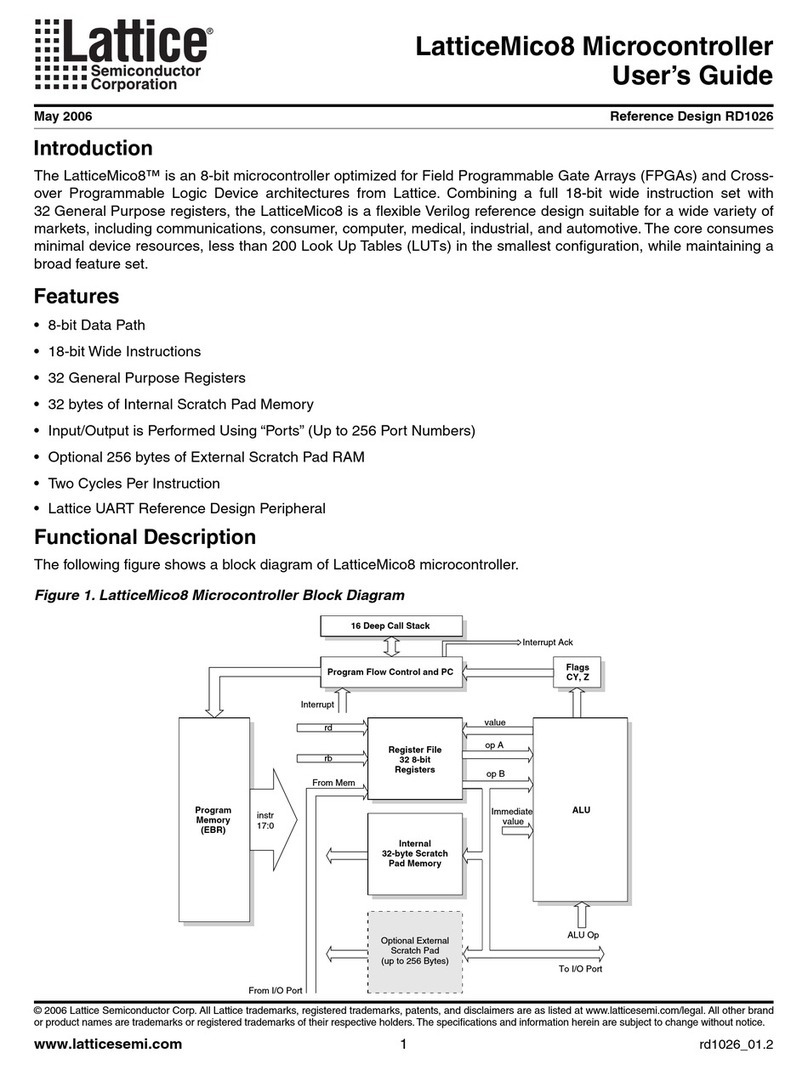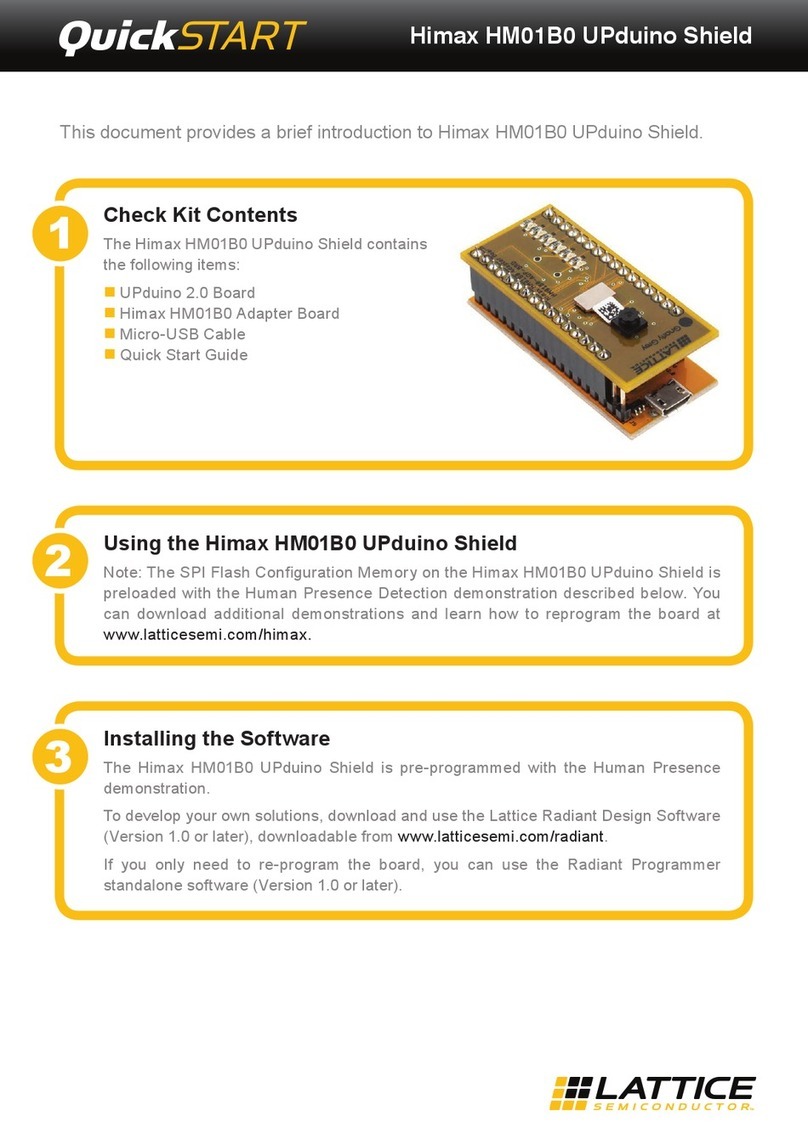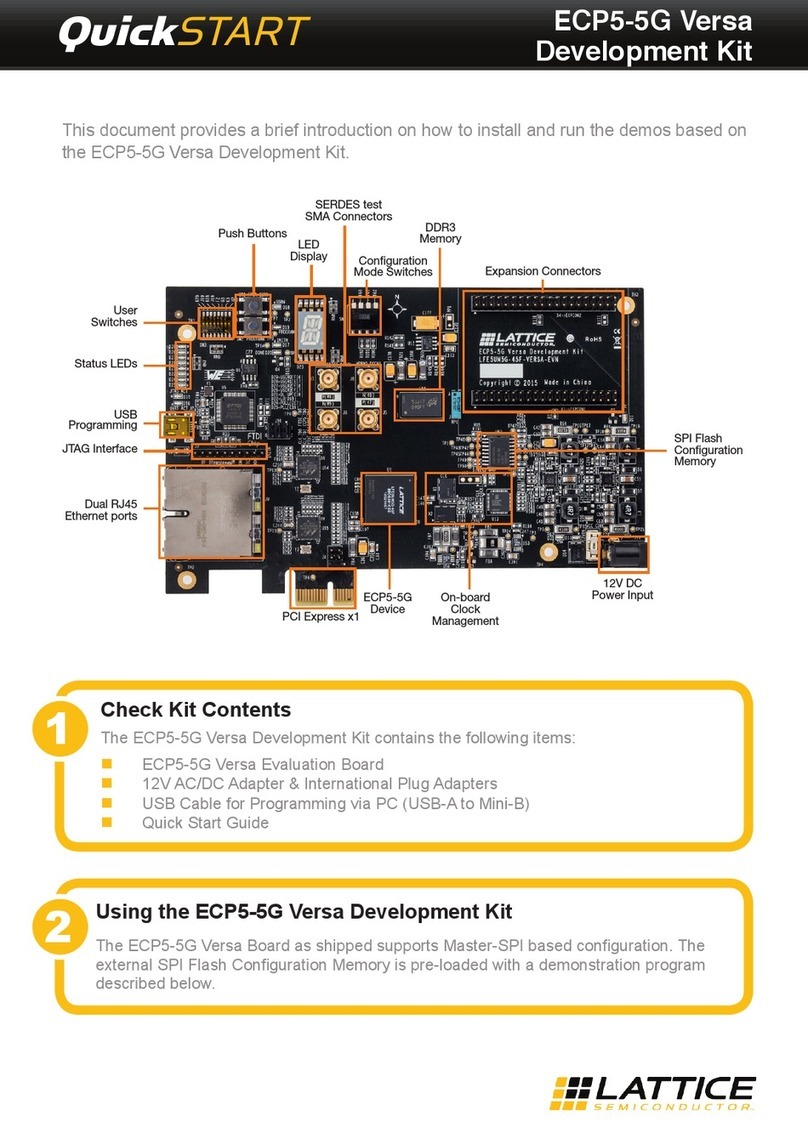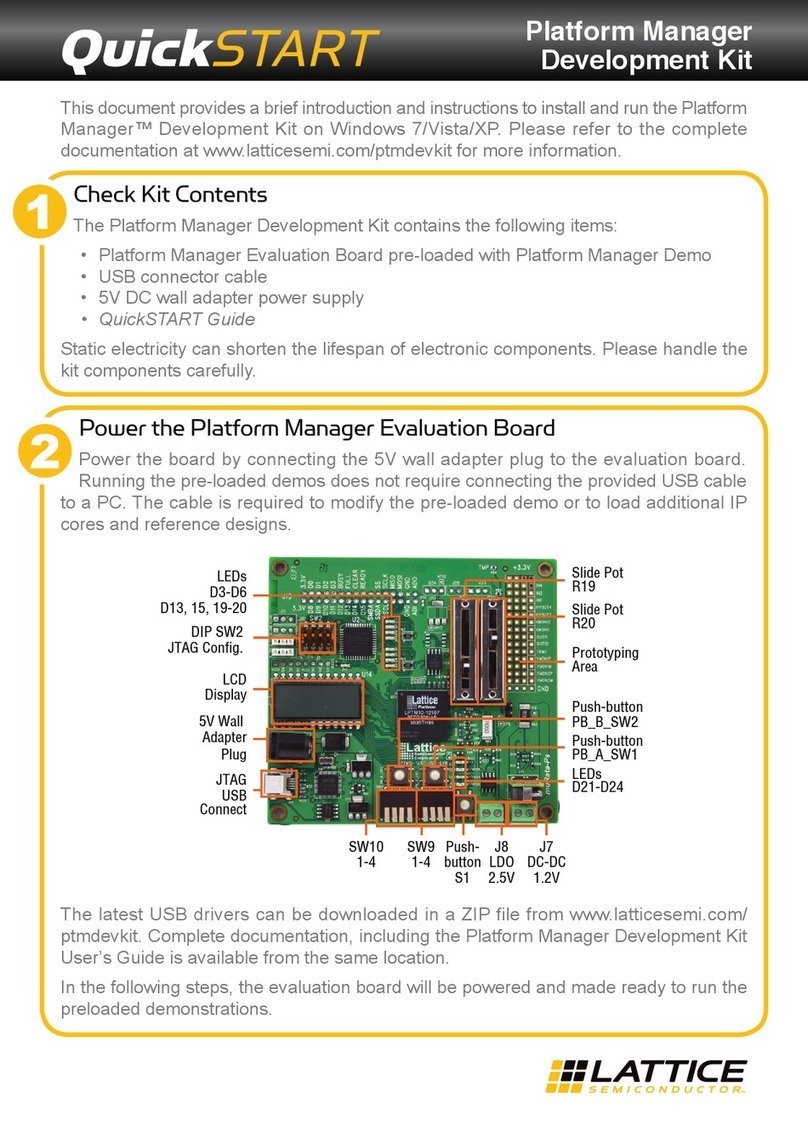
15-2
LatticeECP2/M sysCONFIG Usage Guide
Configuration Pins
The LatticeECP2/M supports two types of configuration pins, dedicated and dual-purpose. The dedicated pins are
used exclusively for configuration; the dual-purpose pins, when not being used for configuration, are available as
extra I/O pins. If a dual-purpose pin is to be used both for configuration and as a general purpose I/O (GPIO) the
user must adhere to the following:
• The I/O type must remain the same, in other words if the pin is a 3.3V CMOS pin (LVCMOS33) during configura-
tion it must remain a 3.3V CMOS pin as a GPIO.
• The user must select the correct CONFIG_MODE setting and set the PERSISTENT bit to OFF in order to use
the dual-purpose sysCONFIG pins as GPIO after configuration. In ispLEVER®these preferences can be set in
the Design Planner. If you are using Lattice Diamond™ design software, select Tools > Spreadsheet View and
then select the Global Preferences tab in the Spreadsheet View.
• The user is responsible for insuring that no internal or external logic will interfere with device configuration.
Also, if slave parallel configuration mode is not being used then one or both of the parallel port chip selects (CSN,
CS1N) must be high or tri-state during configuration.
Programmable options control the direction and type of each dual-purpose configuration pin. These options are
controlled via pin preferences in Lattice ispLEVER and Diamond software, or as HDL source file attributes.
The LatticeECP2/M also supports ispJTAG for configuration, transparent read back, and JTAG testing. The follow-
ing sections describe the function of the various sysCONFIG and JTAG pins. Table 15-2 is provided for reference.
Table 15-2. Configuration Pins for the LatticeECP2/M
Pin Name I/O Type Pin Type Mode Used
CFG[2:0] Input, weak pull-up Dedicated All
PROGRAMN Input, weak pull-up Dedicated All
INITN Bi-Directional Open Drain, weak pull-up Dedicated All
DONE Bi-Directional Open Drain with weak pull-
up, or Active Drive Dedicated All
CCLK Input or Output Dedicated All
DI/CSSPI0N2Input, weak pull up Dual-Purpose Serial, SPI, SPIm
DOUT/CSON2Output Dual-Purpose Parallel, Serial, SPI
CSN2Input, weak pull-up Dual-Purpose Parallel
CS1N2Input, weak pull-up Dual-Purpose Parallel
WRITEN2Input, weak pull-up Dual-Purpose Parallel
BUSY/SISPI2Output, tri-state, weak pull-up Dual-Purpose Serial, SPI, SPIm
D[0]/SPIFASTN2
Input or Output Dual-Purpose
Parallel, SPI, SPIm
D[1:6]2Parallel
D[7]/SPID02Parallel, SPI, SPIm
TDI Input, weak pull-up Dedicated JTAG
TDO Output, weak pull-up Dedicated JTAG
TCK Input with Hysteresis Dedicated JTAG
TMS Input, weak pull-up Dedicated JTAG
1. Weak pull-ups consist of a current source of 30µA to 150µA. The pull-ups for sysCONFIG dedicated and dual-purpose pins track VCCIO8;
the pull-ups for TDI, TDO, and TMS track VCCJ.
2. The sysCONFIG pins on the LatticeECP2M50/M70/M100 are dedicated sysCONFIG pins. The sysCONFIG output pins are actively driven
during normal device operation.

































